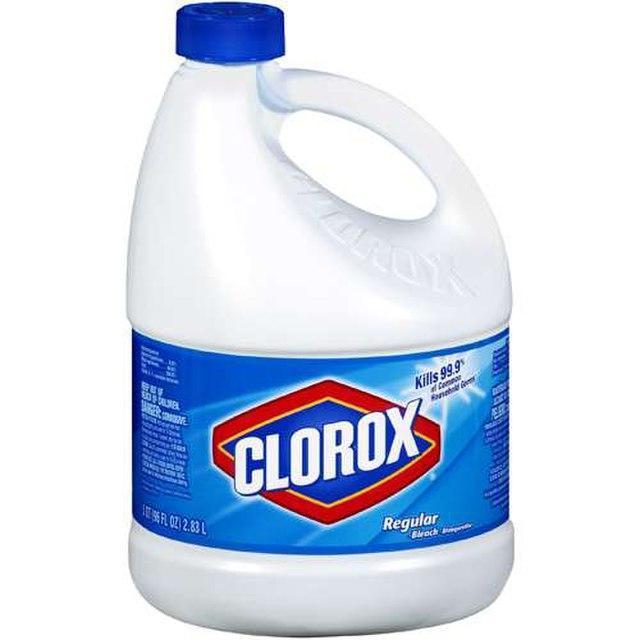Working safely with bleach is crucial for protecting yourself and those around you from potential hazards. This powerful cleaning agent is widely used in both commercial and domestic settings, but it’s important to understand the risks associated with handling and using bleach.
According to the U.S. Consumer Product Safety Commission (CPSC), there were an estimated 3,900 pediatric emergency room-treated injuries associated with bleach in 2018. Additionally, the Centers for Disease Control and Prevention (CDC) states that bleach is one of the major causes of chemical burns in the workplace. These statistics highlight the importance of understanding the potential hazards associated with handling and using bleach and taking the necessary precautions to work safely with it.
In this article, we’ll share some tips on how to work safely with bleach and avoid accidents and injuries. From reading and following label instructions, to wearing appropriate personal protective equipment, and having an emergency plan in place, we’ll cover all the important steps to take when working with bleach.
The hazards associated with bleach can be severe, and it’s important to be aware of them and take the necessary precautions. It’s essential to understand the proper handling and storage procedures, as well as the recommended concentration level. Regular training and education on the use of bleach is also crucial for all individuals who come into contact with it. By following these safety tips and understanding the risks, you can prevent accidents and injuries and keep yourself and those around you safe. So, it’s important to take the time to read this article and learn more about working safely with bleach.
- Always read and follow the label instructions: Bleach is a powerful chemical that can cause serious harm if not used properly. Therefore, it is important to always read and follow the label instructions. The label will provide important information about the product’s composition, potential hazards, and safe handling procedures. Always make sure to understand the label and follow the instructions to the letter. This will help you to use the product safely and effectively, and avoid any accidents or injuries.
- Wear appropriate personal protective equipment (PPE): When working with bleach, it is important to always wear the appropriate personal protective equipment (PPE) such as gloves, goggles, and a face mask. This will protect your skin, eyes, and lungs from exposure to bleach. Additionally, you should always wear protective clothing, such as long-sleeved shirts and pants, to cover your skin from splashes or spills. Wearing PPE will minimize the risk of exposure and ensure that you are protected from the potential hazards associated with bleach.
- Avoid mixing bleach with other cleaning agents: Mixing bleach with other cleaning agents, such as ammonia or acids, can create dangerous chemical reactions. These reactions can release toxic gases that can cause severe respiratory problems and other health issues. Therefore, it is important to avoid mixing bleach with other cleaning agents and to always use the product as directed.
- Proper ventilation: Proper ventilation is crucial when working with bleach. The fumes and vapors produced by bleach can be toxic and can cause eye and respiratory irritation. When using bleach indoors, make sure that the area is well-ventilated and that you are using a mask to protect yourself from inhaling the fumes.
- Have an emergency plan in place: In case of accidental exposure, it’s important to have an emergency plan in place. This includes having easy access to emergency equipment such as an eyewash and shower, and knowing the proper first aid procedures for dealing with bleach exposure. This will help you to respond quickly and effectively in case of an emergency.
- Proper handling and storage: It is important to handle and store bleach properly to prevent accidents and injuries. When handling bleach, make sure to use appropriate containers, such as plastic or glass, and avoid using metal containers as bleach can react with metal and create dangerous chemical reactions. Make sure to store bleach in a cool, dry place, away from heat sources, sparks, and open flames. Keep the container tightly sealed, and clearly label it as bleach to prevent confusion with other chemicals. This advice is especially important if you are storing bleach in your home and you have children.
- Keep the concentration level at the recommended level: The concentration level of bleach is important to ensure its effectiveness and safety. When using bleach for cleaning or disinfecting, make sure to use the recommended concentration level. Using a concentration level that is too high can be dangerous and can cause skin and eye irritation. When diluting bleach, always add the bleach to water, and not the other way around to avoid splashing.
- Regular training and education: Regular training and education on the proper handling and use of bleach is crucial for all individuals who come into contact with it. This includes providing information on the hazards associated with bleach, the proper handling procedures, and the appropriate PPE to be worn. Additionally, it’s essential to have a clear communication system in place, so that everyone knows what to do in case of an emergency.
In conclusion, working safely with bleach is crucial for protecting yourself and those around you from potential hazards. By following these safety tips and understanding the risks associated with handling and using bleach, you can prevent accidents and injuries. Remember, safety should always be the top priority when working with any chemical, including bleach.
References:










